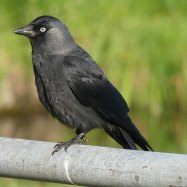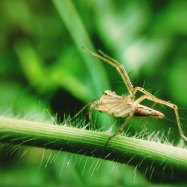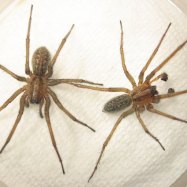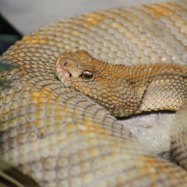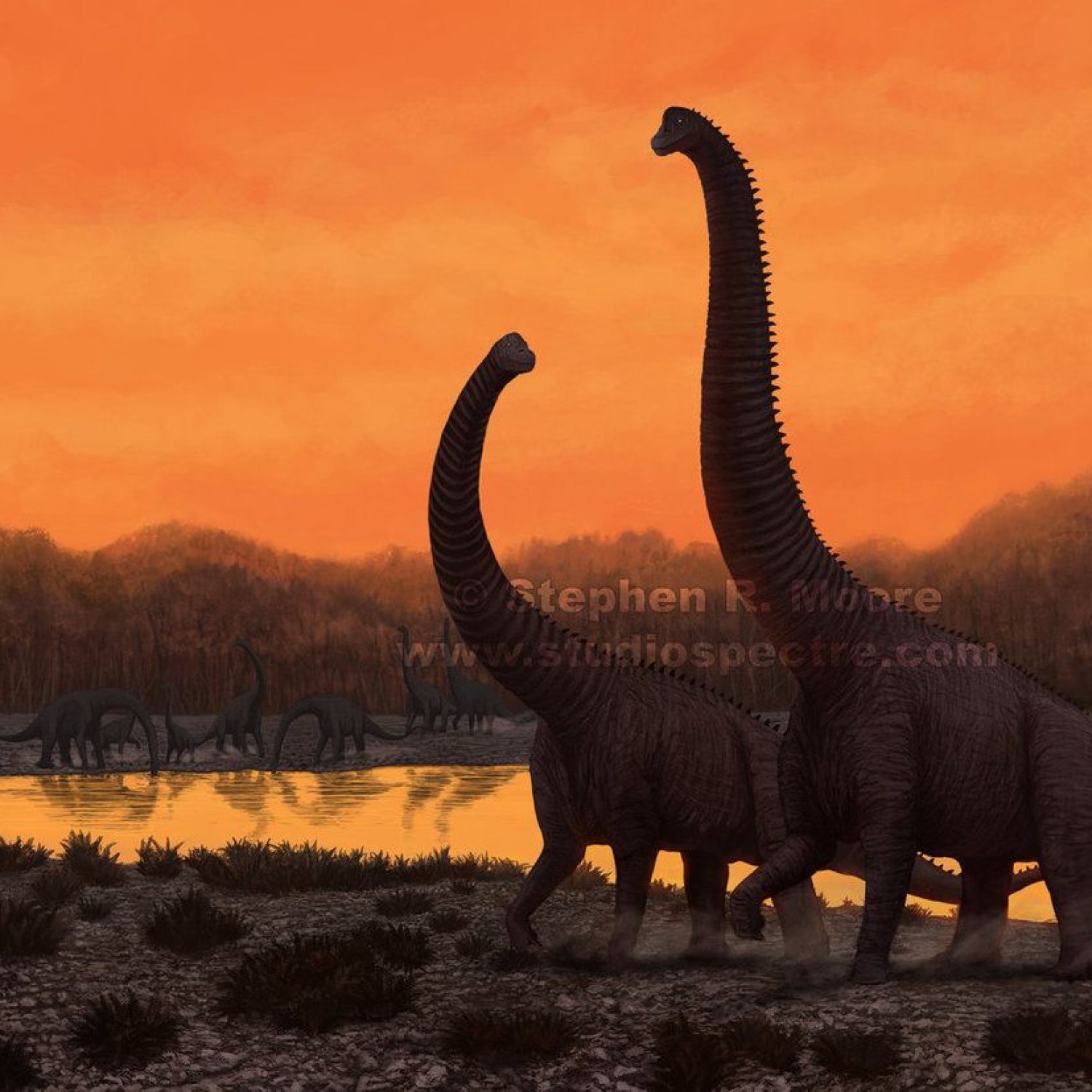
Brachiosaurus
Up to 85 feet
The Brachiosaurus, part of the Brachiosauridae family, was a massive quadrupedal dinosaur that roamed the lands of Colorado and Utah. With a length of up to 85 feet, they were one of the largest animals to ever live on Earth. Its body shape was characterized by a long neck and small head, making it an impressive sight to behold. #Brachiosaurus #dinosaur #Colorado #Utah #prehistoric
Animal Details Summary:
Common Name: Brachiosaurus
Kingdom: Animalia
Habitat: Terrestrial
The Magnificent Brachiosaurus: A Giant Herbivorous Dinosaur of North America
The Jurassic period was a time of immense biodiversity, with a wide variety of plant and animal life roaming the Earth. Among the most well-known creatures of this era are the dinosaurs, massive and awe-inspiring creatures that have captured the imagination of many for centuries. These ancient reptiles ruled the land, air, and sea, and many of their descendants can still be seen today in the form of birds and reptiles.One of the most iconic and fascinating creatures of the Jurassic period is the Brachiosaurus, a giant herbivorous dinosaur that roamed the North American continent Brachiosaurus. With its incredible size, unique body shape, and impressive feeding methods, the Brachiosaurus continues to capture the imagination of people even today.
The Origins of the Brachiosaurus
The Brachiosaurus, whose scientific name is also the same as its common name, is a member of the Sauropod family, a group of giant dinosaurs known for their long necks and small heads. Its name is derived from two Greek words: “brachion” meaning arm and “saurus” meaning lizard, giving it the literal translation of “arm lizard”. This name is a nod to its unique body shape, as we will explore in the later sections.In terms of its classification, the Brachiosaurus belongs to the Animalia kingdom, Chordata phylum, Sauropsida class, and Saurischia order. It is part of the Brachiosauridae family, which includes other similar sauropod species such as Giraffatitan, Lusotitan, and Sauroposeidon. Brachiosaurus is known for its massive size and unique body structure, making it one of the most famous dinosaurs in history.
The first fossils of Brachiosaurus were discovered in 1899 by Elmer S. Riggs in the Colorado River valley of western Colorado Brookesia Micra. Later, other fossil discoveries were made in Wyoming and Utah, solidifying the Brachiosaurus’ place as a native of North America.
Habitat and Distribution
The Brachiosaurus was a terrestrial dinosaur, meaning it lived on land rather than in water or in the air. Its large size and herbivorous diet required it to constantly forage for food, which it did by moving around on land.As mentioned earlier, the Brachiosaurus was native to North America, specifically in what is now the United States. Its geographical distribution is limited to the western part of the continent, with fossils being found in Colorado, Wyoming, and Utah. This distribution is likely due to the environmental conditions and availability of food sources in these regions during the Jurassic period.
Body Shape and Coloration
The Brachiosaurus was a massive dinosaur, with an estimated length of up to 85 feet and a weight of 70-80 tons. This made it one of the largest land animals to have ever existed, second only to the Argentinosaurus and the Patagotitan. Its body shape was unique, with a large, bulky body and a distinctive long neck that could reach up to 30 feet in length.Its limbs were also noteworthy, with the front legs being longer than the back legs, giving it the appearance of being a “high shoulders” dinosaur. This unique body shape, along with its long neck and small head, made the Brachiosaurus easily identifiable and distinguishable from other dinosaurs.
As for its coloration, the Brachiosaurus' exact colors are unknown, as no soft tissue has been found in the fossils. However, based on the environment it lived in, it is believed that it was likely a gray or greenish-brown color. This would have allowed it to blend in with its surroundings, providing camouflage and protection from predators.
Feeding Methods
Despite its massive size, the Brachiosaurus was a herbivore, meaning it only ate plants. Its long neck and small head were perfectly adapted for this diet, as it could reach high into trees to graze on leaves and branches that other dinosaurs could not reach.One of the most fascinating things about the Brachiosaurus is its feeding methods. Most herbivorous dinosaurs used their teeth to grind and crush vegetation, but the Brachiosaurus had a unique method. It used its long neck to reach for food, but instead of chewing it, it would swallow it whole without any chewing or grinding. Once in the stomach, the food would be broken down by digestive juices and bacteria, making it easier to digest.
This feeding method allowed the Brachiosaurus to consume a vast amount of food quickly, an essential ability considering its massive size and energy requirements.
The Brachiosaurus and Modern Technology
The world of paleontology and scientific research has greatly benefited from advancements in technology, allowing us to learn more about dinosaurs like the Brachiosaurus. With the use of state-of-the-art tools and techniques, scientists have been able to create 3D models of the Brachiosaurus, giving us a better understanding of its anatomy and movements.Furthermore, researchers have also been able to extract and analyze ancient DNA from fossils, shedding light on the Brachiosaurus' genetic makeup and possible evolutionary relationships with other dinosaurs. This has also allowed for the creation of realistic and accurate reconstructions of the Brachiosaurus and other dinosaurs, enhancing our understanding of these incredible creatures.
In Popular Culture
The Brachiosaurus has captured the imagination of people for centuries, featuring prominently in books, movies, and TV shows. Its imposing size and unique features have made it a favorite among dinosaur enthusiasts and children alike.One of the most notable appearances of the Brachiosaurus was in the 1993 blockbuster film "Jurassic Park" where it was portrayed as a gentle giant, peacefully grazing on plants. Its iconic scene, where it stands on its hind legs to reach for tree branches, has become a classic moment in movie history.
In addition to popular media, the Brachiosaurus has also inspired countless toys, games, and other merchandise, making it a staple in the world of dinosaur enthusiasts.
The Legacy of the Brachiosaurus
Despite its extinction millions of years ago, the Brachiosaurus continues to fascinate and captivate people today. Its massive size, unique body shape, and impressive feeding methods have made it an iconic and memorable creature from the Jurassic period.Through continued research and advancements in technology, we have been able to learn more about the Brachiosaurus and its importance in the Earth's history. As we uncover more about this magnificent dinosaur, we gain a deeper understanding of the world millions of years ago and the diverse and incredible creatures that once roamed the Earth.

Brachiosaurus
Animal Details Brachiosaurus - Scientific Name: Brachiosaurus
- Category: Animals B
- Scientific Name: Brachiosaurus
- Common Name: Brachiosaurus
- Kingdom: Animalia
- Phylum: Chordata
- Class: Sauropsida
- Order: Saurischia
- Family: Brachiosauridae
- Habitat: Terrestrial
- Feeding Method: Herbivorous
- Geographical Distribution: North America
- Country of Origin: United States
- Location: Colorado, Utah
- Animal Coloration: Varies (likely gray or greenish-brown)
- Body Shape: Large and quadrupedal
- Length: Up to 85 feet
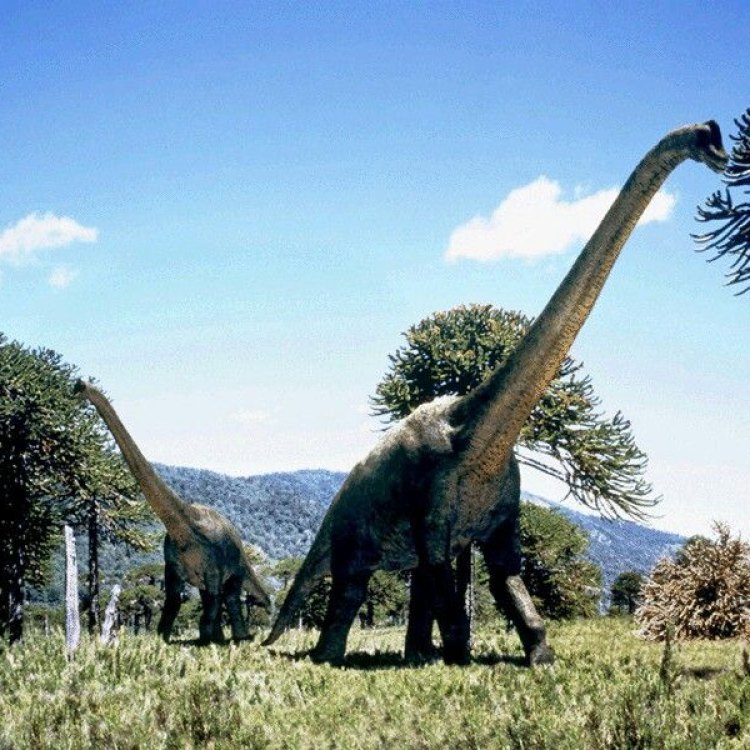
Brachiosaurus
- Adult Size: Up to 40 to 50 feet tall
- Average Lifespan: Unknown (estimated to be around 30 to 50 years)
- Reproduction: Sexual
- Reproductive Behavior: Unknown
- Sound or Call: Unknown
- Migration Pattern: Non-migratory
- Social Groups: Unknown (likely solitary)
- Behavior: Gentle and slow-moving
- Threats: Extinction (long-extinct species)
- Conservation Status: Extinct
- Impact on Ecosystem: Unknown
- Human Use: Fossils used for scientific research and education
- Distinctive Features: Long neck and small head, high spines on the back
- Interesting Facts: One of the largest known dinosaurs, primarily known from fossil remains
- Predator: Unknown (likely few natural predators due to its size)
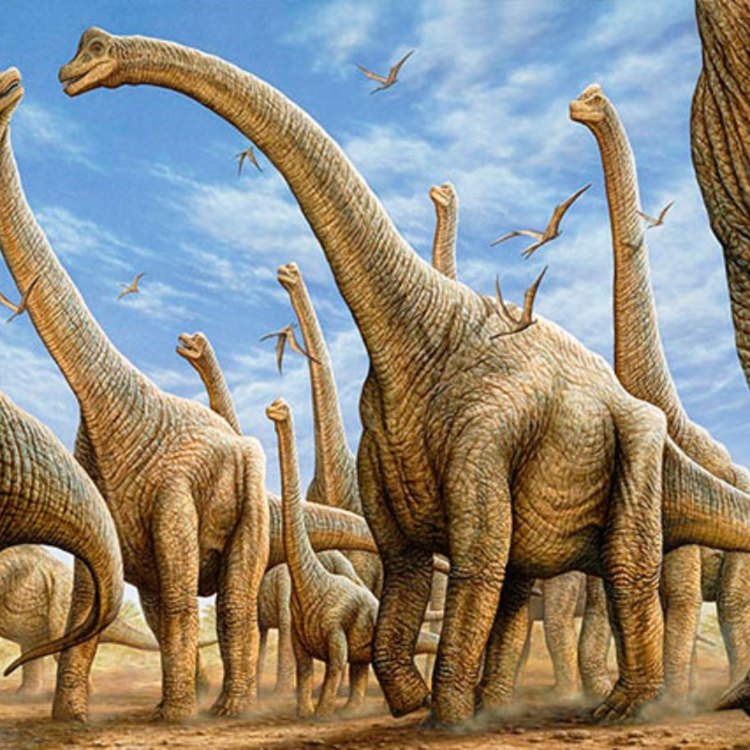
Brachiosaurus
The Gentle Giant: A Closer Look at Brachiosaurus
The world of dinosaurs is filled with a diverse range of fascinating creatures, each with their own unique features and behaviors. One of the largest and most well-known dinosaurs is the Brachiosaurus. With its long neck, small head, and towering height, this gentle giant roamed the earth millions of years ago. In this article, we will take a closer look at the Brachiosaurus, its distinctive features, behavior, and its impact on the ecosystem PeaceOfAnimals.Com.The Brachiosaurus, whose name means “arm lizard” in Greek, is a species of sauropod dinosaur that lived during the late Jurassic period, about 150 million years ago. They are primarily known from fossil remains found in North America, Africa, and Europe. This massive herbivorous dinosaur was estimated to reach up to 40 to 50 feet tall, making it one of the largest known dinosaurs.
Adult Size:
One of the most striking features of the Brachiosaurus is its size. Standing at 40 to 50 feet tall, it was taller than a four-story building. Its long neck alone could reach up to 30 feet in length, allowing it to browse tall trees for food. The Brachiosaurus had a robust body with thick legs and a long tail, and it is estimated to have weighed around 30 to 80 tons. With its immense size, the Brachiosaurus was a true giant of the prehistoric world.
Reproduction:
Like other dinosaurs, the reproductive behavior of the Brachiosaurus is still a mystery Bamboo Worms. As they are long-extinct species, scientists can only make educated guesses based on the fossil evidence. It is believed that the Brachiosaurus reproduced sexually, where males and females mate to produce offspring. However, the exact details of their reproductive behavior remain unknown.
Behavior:
Despite its immense size, the Brachiosaurus was believed to be a gentle and slow-moving dinosaur. Its small head and long neck suggest that it was a selective feeder, preferring higher branches and leaves. Its massive body and long legs were well-suited for supporting its immense weight. The Brachiosaurus most likely spent most of its time foraging for food and moving at a leisurely pace, conserving its energy.
Social Groups:
The social behavior of the Brachiosaurus is still a mystery, as little is known about their social groups. Based on their solitary behavior and the large territories they would need due to their size, scientists believe that Brachiosaurus were likely solitary creatures. They may have come together temporarily during mating season, but then dispersed afterward.
Sound or Call:
As with most dinosaurs, the Brachiosaurus did not leave any vocal evidence behind. However, it is possible that they would have made low-frequency calls that could have traveled long distances due to their size. These calls may have been used for communication or to attract mates, but there is no solid evidence to confirm this theory.
Migration Pattern:
The Brachiosaurus was a non-migratory species, meaning that they did not move from one place to another regularly. Their immense size and slow movement would have made long-distance travel challenging and energy-consuming. They most likely found a suitable habitat and remained there until resources became scarce, forcing them to move to another area.
Distinctive Features:
One of the most distinctive features of the Brachiosaurus is its long neck and small head. Their necks were built for browsing high vegetation, and their small heads were filled with pencil-like teeth that helped them strip leaves off branches. The Brachiosaurus also had high spines along its back, adding to its imposing size and making it a recognizable species.
Impact on Ecosystem:
As with most long-extinct species, it is challenging to determine the exact impact of the Brachiosaurus on the ecosystem. They were herbivorous and ate primarily plants, meaning that they may have had a minor impact on their environment. However, their immense size could have contributed to the spreading of plant seeds over long distances, playing a crucial role in the growth and dispersal of vegetation.
Predator:
The Brachiosaurus lived during a time when dinosaurs were the dominant species on the earth. Its massive size would have made it less vulnerable to predators, as few animals would dare to take on such a formidable target. However, as apex predators, large carnivorous dinosaurs like Allosaurus and Ceratosaurus may have posed a threat to the Brachiosaurus, particularly the young and weak.
Threats:
Despite its impressive size, the Brachiosaurus was not immune to threats. Like other dinosaurs, its ultimate demise was caused by an extinction event. The most widely accepted theory is that the impact of an asteroid caused a chain reaction of events that led to mass extinction, including the extinction of the Brachiosaurus. This has been supported by the discovery of a large impact crater in Mexico, believed to be evidence of the asteroid impact.
Conservation Status:
Given that the Brachiosaurus is a long-extinct species, it is not listed on the IUCN Red List. However, its fossils are considered important scientific resources and are strictly protected. Fossils of the Brachiosaurus have been used for scientific research and education, providing valuable insights into the world of dinosaurs and how they lived.
Interesting Facts:
Despite its towering height and immense size, the Brachiosaurus was not the heaviest dinosaur known to have existed. That title belongs to another sauropod, the Argentinosaurus, estimated to have weighed around 100 tons. Additionally, the Brachiosaurus is considered one of the largest and tallest dinosaurs to have ever roamed the earth.
In recent years, there has been some debate among paleontologists regarding the taxonomic classification of Brachiosaurus. Some believe that there are two separate species, the Brachiosaurus and Giraffatitan, based on differences in their vertebrae and other skeletal structures. However, more research and evidence are needed to confirm this theory.
Conclusion:
The Brachiosaurus remains one of the most iconic and fascinating dinosaurs, known for its impressive size and gentle nature. Despite its extinction, it continues to capture the imagination and curiosity of people of all ages, providing a window into the prehistoric world. Through fossils and scientific research, we continue to learn more about this gentle giant and its place in our planet's history.
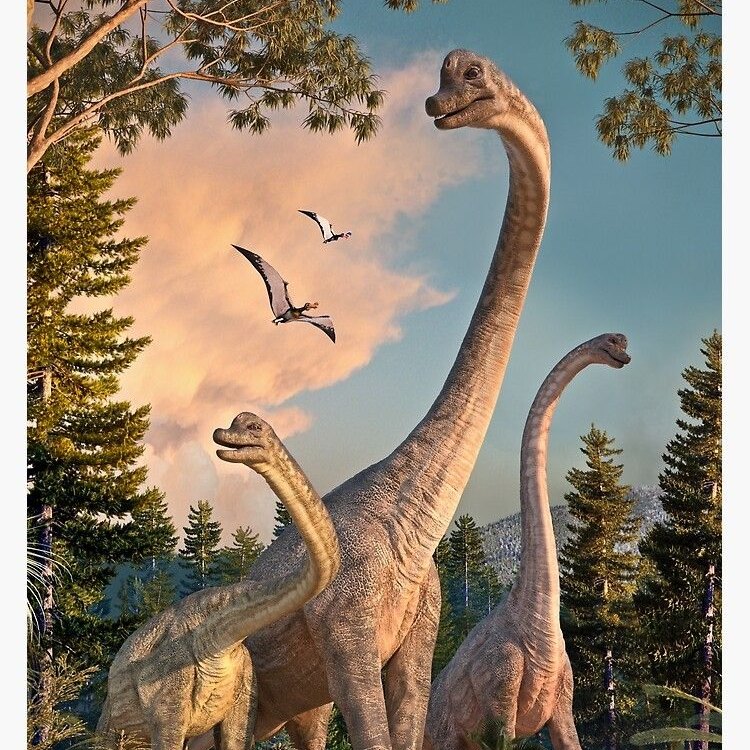
The Magnificent Brachiosaurus: A Giant Herbivorous Dinosaur of North America
Disclaimer: The content provided is for informational purposes only. We cannot guarantee the accuracy of the information on this page 100%. All information provided here may change without prior notice.


